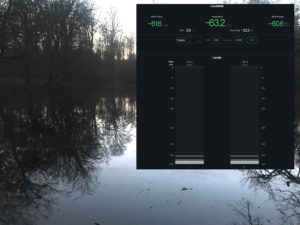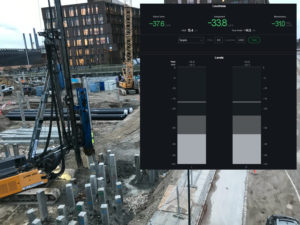Listen to audio examples and a description of how we use gain and levels (use headphones)
Recorded Ambiences
When going to download your Munk Productions Ambisonic Ambiences package, you have two options when it comes to level and gain. You can freely download any option(s) you need:
- "Same Gain Scheme" files
- Normalised files
For Single Ambiences, both Same Gain and Normalised files are included in the zip file.
During production, the individual audio files of Munk Productions Ambisonic Ambiences (MPAA) all have the same static gain applied (+25 dB compared to the raw recording) (Same Gain Scheme).
But we also produce peak normalised versions of the files. These two options are described below.
Note: We recommend that you use Option 2 (Same Peak Scheme) files for auditioning files to use in a project, as the loudness jumps between files are much smaller.
Option 1: Same Gain Scheme
As mentioned above, audio files have a fixed gain applied (+25 dB), except in a few cases (see below).
This scheme means that
- the loudness of different real-world scenes can be compared directly
- the dynamic range of the real world is maintained
- you still get a reasonable starting level despite the large dynamic range of real-world sounds
- if you want 100% realistic productions, just keep the gain constant across ambiences
- and that quiet ambiences are really quiet, sometimes barely heard (roomtones in particular)


The exceptions
Occasionally, sounds are so loud we experience clipping at +25 dB of gain. This happens for example with
- fireworks
- close, passing trains
- heavy machinery
- applause and clapping
- sudden, loud noises in special cases
When that happens, we reduce the gain just enough to avoid clipping in the Ambisonic files. That also avoids clipping in the binaural files.
This only applies to 2-4% of audio files. And when it does, you'll see the gain change in both the filename and the description.
Option 2: Same Peak Scheme
When auditioning files to use in a project, it is convenient to have them closer to an equally loud level. Otherwise you'd have to turn the volume up and down all the time, and you might get loud levels into your ears when switching from a quiet file to a loud one.
Also, you might not want or need the advantages of the Same Gain Scheme for your production.
Therefore we have produced an additional set of ambience files with nearly equal peak level. The files have been normalised to -2 dBFS - but with a maximum gain of +30 dB, as it makes no sense to amplify very quiet ambiences more than 30 dB, not least due to noise levels.
We have chosen to peak normalise instead of loudness normalise to get the loudest possible file. Note that no dynamic range reduction (compression) has been used; the dynamic range of each individual file is preserved.
You should, however, take note of the following when using Same Peak Scheme files:
- Quiet ambiences tend to be too loud compared with louder ambiences - you should be careful to attenuate them appropriately in your production
- Levels are all over the place! You have no reference as to how loud any given ambience is in reality - and you'll easily set quiet ambiences too loud
- Ambiences marked as matching other ambiences, or even just ambiences recorded on the same location, will have different loudness due to different peaks of the content. They need to be level equalised to match
- The dB marking in the file name and description, in the case of attenuated ambiences (see above), has no meaning here and should be disregarded
For these reasons, Same Peak Scheme files are best used as single ambiences/effects (and for auditioning), whereas Same Gain Scheme files are better suited for more coherent productions such as fiction and podcast stories.
Designed Ambiences
There is only one level version for Designed Ambiences. Because these are a mix of several recorded Ambiences plus "spot" effects, the notion of Same Gain doesn't make sense. Therefore we normalise these in an "intelligent" manner during production.
In the case of scenes with only one version we peak normalise to -2 dBTP, unless it is a continuous background with no discernible louder sound sources. If so, we loudness normalise to about -30 LUFS - this avoids overly loud backgrounds.
In the case of a scene series with a number of versions we peak normalise (amplify) the loudest Ambience in the series to -2 dBTP and amplify the other files of the series with the same amount. This ensures a uniform background loudness such that you can cut directly between the different versions with no unwanted loudness jumps.
